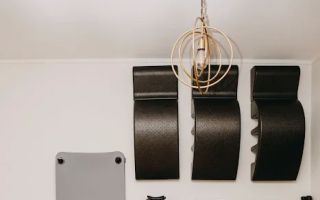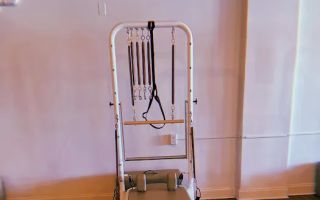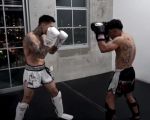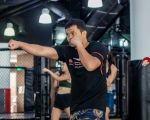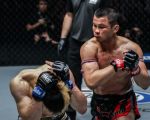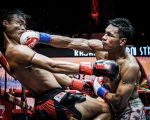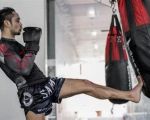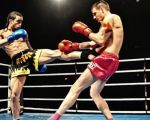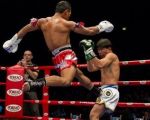1. Muay Thai Elbow Techniques: Precision and Power
Muay Thai is often referred to as the "Art of Eight Limbs," and elbows play a vital role in its arsenal. The sharp, powerful strikes delivered by the elbow are designed to cause maximum damage while closing the distance between you and your opponent. Unlike punches, elbows are short-range weapons that can inflict cuts, bruises, and knockouts when used correctly.
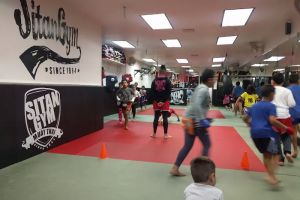
Sitan Gym Muay Thai
25-34 Steinway St, Astoria, NY 11103, USA
Key Elbow Strikes in Muay Thai
There are several types of elbow strikes in Muay Thai, each with its own purpose:
- Horizontal Elbow: A powerful strike thrown across the opponent’s face, aiming to break the nose or damage the cheekbones.
- Diagonal Elbow: Delivered at a sharp angle, usually aimed at the temple or jaw for knockout potential.
- Upward Elbow: Perfect for close-range combat, often used to catch an opponent when they lower their head, aiming for the chin or throat.
- Downward Elbow: This strike comes down from above, targeting the opponent's head or neck and is ideal when clinching or controlling.
Each of these elbow techniques requires practice to master the precision, speed, and angle necessary to land an effective strike. In Muay Thai, elbows are often used in combination with other techniques, such as punches or knees, to overwhelm the opponent and create openings for further attacks.
2. Mastering Muay Thai Knee Techniques for Control and Damage
Knees are another formidable weapon in Muay Thai, especially in the clinch. Unlike elbows, knees are longer-range strikes that allow you to control your opponent’s posture while delivering devastating damage to their body or head. The knee strike is versatile and can be used in both defensive and offensive situations.

Sityodtong Muay Thai Academy
100 Broadway, Somerville, MA 02145, USA
Types of Knee Strikes in Muay Thai
- Straight Knee: A forward-driven strike that is typically aimed at the opponent’s midsection or head. It’s particularly effective when in close quarters or clinch positions.
- Curved Knee: A hook-style knee aimed at an opponent's ribs or head. This strike often catches opponents by surprise and can cause significant damage.
- Jumping Knee: A powerful, airborne knee strike that can land on the opponent’s head or chest, often used to finish a fight or capitalize on a strong position.
- Diagonal Knee: This strike comes at an angle, targeting the upper body or the face and is typically used to break an opponent’s guard.
To fully master the knee strike in Muay Thai, one must develop not only the strength and technique but also the ability to control the clinch effectively. Knee techniques are often used in conjunction with elbow strikes to keep an opponent on the defensive.
3. Training Tips and Techniques to Perfect Your Elbow and Knee Skills
Perfecting your Muay Thai elbow and knee techniques requires consistent practice, a strong understanding of body mechanics, and focused training sessions. Here are a few tips to help you sharpen your skills:
- Focus on the Fundamentals: Start by learning the correct stance, balance, and movement. Mastering the basics is crucial before adding speed or power to your strikes.
- Condition Your Elbows and Knees: Regularly conditioning your elbows and knees through drills and pad work will strengthen these parts of your body and improve the impact of your strikes.
- Practice in the Clinch: Spend time in the clinch with a training partner to learn how to control the opponent while delivering effective knees and elbows at close range.
- Speed and Precision: Focus on delivering fast, sharp strikes. Accuracy and timing are more important than sheer power when executing elbow and knee techniques.
4. Real-Life Examples of Muay Thai Elbow and Knee Usage
One of the most iconic examples of elbow and knee usage in Muay Thai comes from the legendary fighter Buakaw Banchamek. In his fight against South Korean fighter Chike Chike, Buakaw showcased incredible precision with his knee strikes in the clinch, landing multiple shots to his opponent’s body and head. These techniques allowed him to control the pace of the fight and ultimately dominate his opponent.
Similarly, many Muay Thai fighters have earned knockout victories through devastating elbow strikes, like the brutal diagonal elbow that ended the fight for many of his opponents. These techniques are not only practical but also play a key role in the psychology of the fight, keeping your opponent guessing and always on the defensive.
5. Muay Thai Gear: Choosing the Best Equipment for Elbow and Knee Techniques
To execute Muay Thai elbow and knee techniques effectively, it's essential to have the right gear. The following Muay Thai products can help enhance your training and performance:
- Muay Thai Pads: A high-quality pair of Thai pads allows you to practice your knee and elbow strikes with precision. Look for pads that offer durability and comfort during training.
- Elbow and Knee Guards: While elbows and knees are powerful, they can also be risky. Invest in protective gear like elbow and knee guards to reduce the risk of injury during intense training sessions.
- Muay Thai Shorts: Lightweight, flexible Muay Thai shorts allow freedom of movement for both elbow and knee techniques. A good pair of shorts is essential for comfort and mobility.
Investing in the right gear will ensure that your training sessions are both safe and effective, helping you improve your Muay Thai skills more efficiently.









